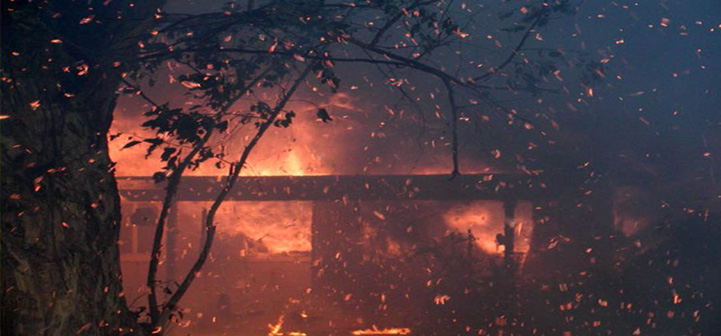Article written by: Yvonne Barkely, University of Idaho Extension, Moscow, ID
The condition of your forestland after a wildfire should be assessed as soon as possible after the event. Fire-based forest ecosystems are extremely resilient and are supremely adapted to disturbance by fire. From a management perspective damages are defined as the unfavorable effects of fire-caused changes that make management objectives difficult to achieve or unobtainable. Benefits are the favorable effects of fire-caused changes and are factors that contribute to the realization of management objectives.
All effects should be looked at with reference to the overall short- and long-term management objectives of any particular piece of land. The effects of fire in an ecosystem that is being managed for wilderness or habitat objectives may be viewed differently from those being managed primarily for timber production.
Emergency Rehabilitation Treatments
Native species living in fire-based ecosystems have one or more mechanisms for surviving fire and/or reproducing after a burn. This is important! Emergency rehabilitation will not be necessary for many burned areas of a forest. Much or most of these areas will recover normally without intervention, and well-intentioned rehabilitation efforts could actually interfere with natural recovery responses.
Rehabilitation treatments should be considered only if the risks to life, property, or other resource values are high. Other reasons for emergency rehabilitation treatments are to repair facilities for safety reasons, stabilize biotic communities, and prevent the degradation of critical known cultural sites and natural resources.
Treatment effectiveness depends greatly on appropriate treatment selection, which in turn depends on accurately identifying emergency conditions. Once rehabilitation treatments are in place, monitoring is very important to determine if additional treatments are needed and to evaluate and improve treatment effectiveness.
Assessment
For a private forest landowner or manager who is dealing with smaller acreages, the best way for gathering the necessary information will be by walking the property. Assessment and treatment may be more accurate and effective if adjacent properties are included. Damage assessment should be done as soon after the burn as possible so as to allow time for necessary emergency post-fire treatments. Emergency erosion treatments need to be installed before the first rains of the fall for best effects.
To begin:
- • Be very careful when first entering burnt areas. Trees with partially burnt trunks and root systems, called hazard trees, are common and can fall without warning.
- • Review your management objectives.
- • Review existing records. An initial inventory of damages will be easier if you already have records of the pre-burn conditions and characteristics of your land.
- • Photographs are a valuable part of management plans and should be updated any time a change has occurred on the landscape. Establishing set photo points throughout your land will help you compare conditions and changes over time.
- • The information you gather will be more manageable if you assess your land by unit. Units are areas similar in landform and vegetative communities. You can delineate units on a topographic map of your land.
- • Color-coding information can make interpreting your maps easier:
- – green for areas with no to light damage,
- – yellow for moderate damage,
- – red for severe damage.
- • Make several copies of unit maps, as you will have different types of information to collect.
- • When you are through, photocopy all but your base-map onto clear acetate. You can then overlay the maps and see where areas of greatest concern are, as well as use them to look for patterns and compare characteristics and differences.
Landowners are encouraged to check with local land management agencies for information and expert visits. You can glean a lot of general information from your local county soil survey, which is available to you from the U.S. Department of Agriculture Natural Resource Conservation Service. To find the office nearest you, check your local listings, or go to their Web site at www.nrcs.usda.gov.
For more information on this topic, go to: http://www.cnr.uidaho.edu/extforest/AftertheBurnFINAL.pdf, and go to page 30.
For post-fire assessment instructions and forms, go to: http://www.cnr.uidaho.edu/extforest/AftertheBurnFINAL.pdf, and go to page 33.

